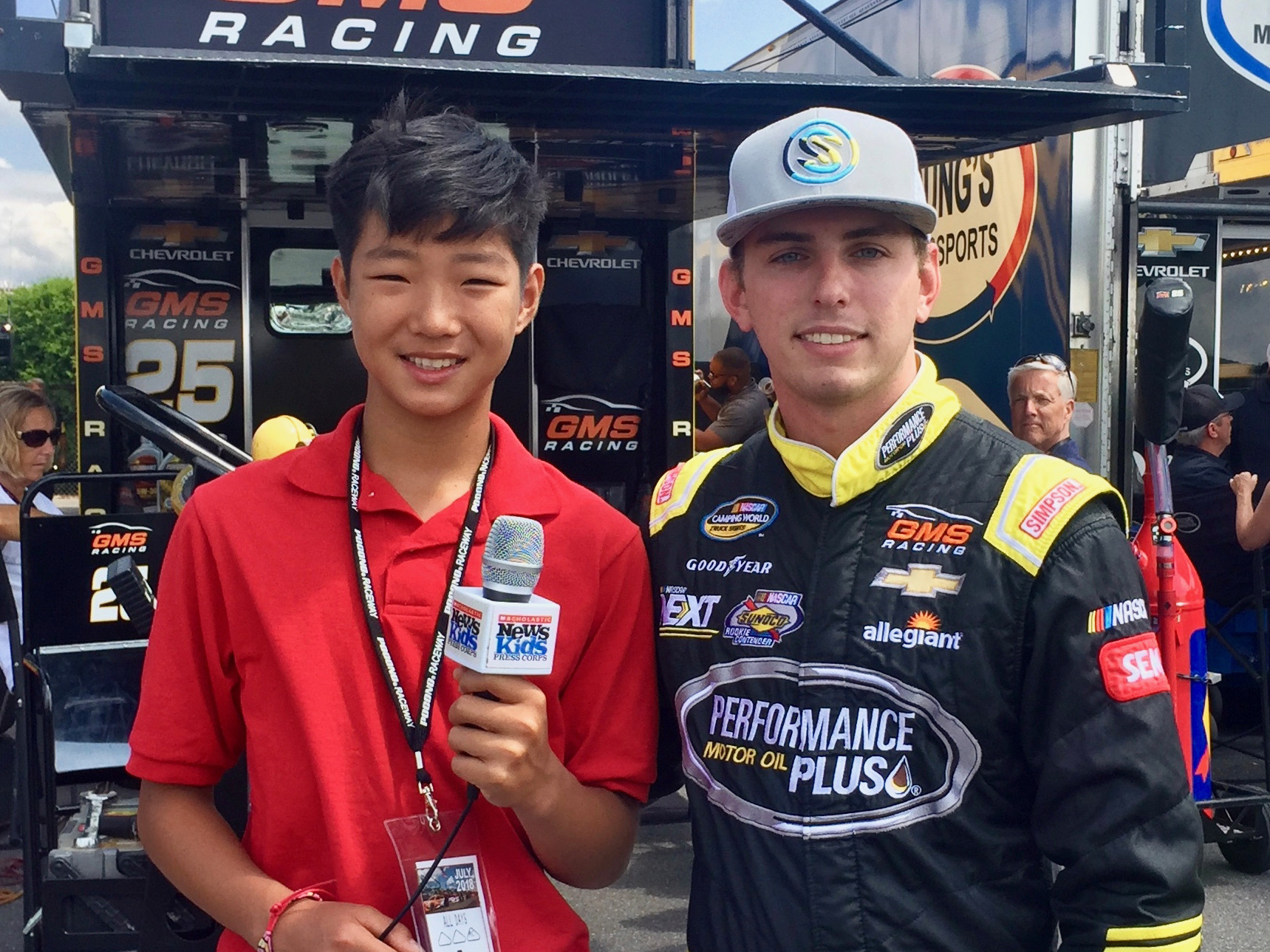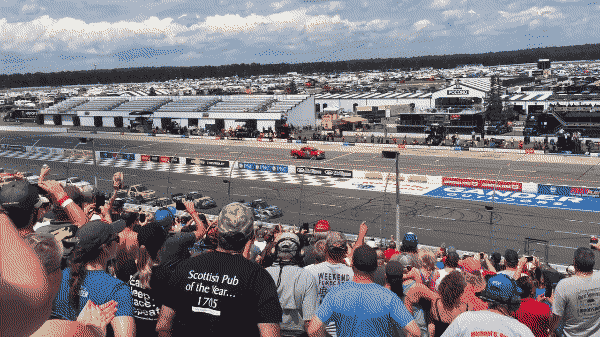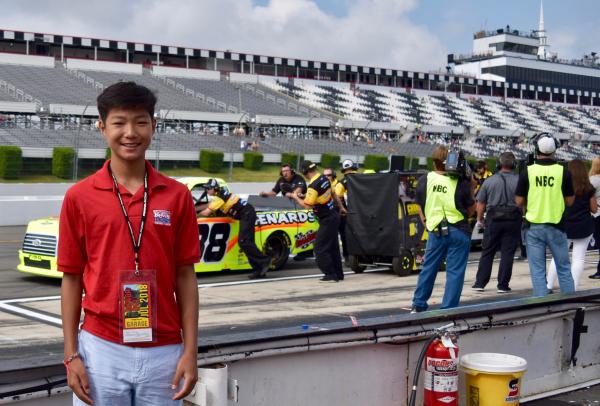KID REPORTERS’ NOTEBOOK
Let’s Go Racing!

WATCH THE VIDEO
Click below to learn more about Stone’s visit to Pocono Raceway.
“Let’s go racing!” announcer and former race-car driver Darrell Waltrip says in a booming voice. The starter waves a green flag, and drivers hit the gas. In the stands, tens of thousands of die-hard NASCAR fans shout words of encouragement to their favorite drivers.
That was the atmosphere at Pocono Raceway in Long Pond, Pennsylvania, at a recent NASCAR outing. Founded in 1948, NASCAR boasts tens of millions of fans around the world. It is best-known for the Monster Energy NASCAR Cup Series, a league for the top stock car drivers in the United States.
A stock car is a normal car that has been modified for racing. “All stock cars in the top NASCAR series are either a Chevy, Toyota, or Ford,” marketing official Matt Stallknecht told me. “Each model is different. For example, the nose of a Toyota is very different from the nose of a Ford. There are also aerodynamic differences between the cars. Each team takes car parts from one of the three manufacturers, and they tune and adjust them to NASCAR regulations.”
NASCAR also runs a league for drivers who race trucks. The trucks are similar to stock cars, but with lower top speeds. A stock car can go around 200 miles per hour, while a truck racing at Pocono hits top speeds of about 180 miles per hour.

Pocono Raceway is also known as The Tricky Triangle.
THE TRICKY TRIANGLE
Pocono Raceway is nicknamed The Tricky Triangle. It is the only track to have three turns, said Ben May, who is president of the raceway. “Each turn has a different degree of banking, which is challenging for drivers.”
The event I attended showcased the Gander Outdoors 150 for trucks, leading up to the main event, the Gander Outdoors 400, a stock car race. The “150” and “400” indicate the number of miles for each race.
Kyle Busch earned his sixth victory of the season in the big race, the 400. “It was just a lot of hard work by smart people,” Busch later told reporters.
A TEAM EFFORT
The expert drivers make the sport look easy, but there is a lot of training that goes into racing.
“Endurance-wise, driving a car or truck is really taxing,” said Dalton Sargeant, who placed third in the truck racing competition. “It gets up to 160 degrees inside a car for a long period of time, so you do lose a lot of weight in terms of sweat, and you have to be in really good shape.”
When asked how he prepares for a race, Sargeant said, “I have to watch a lot of films, similar to football players. Also, I practice in a simulator and try to learn as much as I can about the track.”
Many people think of car and truck racing as a battle of the better driver. However, a lot happens off the track to make NASCAR a true team sport.
“You could be the best driver in the field, but if you don’t have a good team around you, it doesn’t amount to much,” said Stallknecht.
A driver’s team consists of dozens of people, including a crew chief, engineers with different areas of expertise, and a pit crew. The team works together to ensure success for the car and driver.
“My team is always trying to get the setup of the car right,” said stock car driver William Byron, “trying to make the car go faster and adjust it to drive a certain way.” At age 20, Byron is one of the sport’s brightest rising stars.
Sargeant agreed that racing is a team effort. “The crew chief makes the calls during the race,” he explained. “As for the pit crew, we can either lose a lot of time or make up a lot of time while pitting, which is one of the easiest times to pass other cars.”

Stone at Pocono Raceway, a superspeedway in the Pocono Mountains in Pennsylvania
STEM AT WORK
STEM, which stands for science, technology, engineering, and math, plays a huge role in NASCAR. In fact, Byron got his start on the sport at the computer.
“When I was a kid,” the driver recalled, “I played a racing simulation game called iRacing, which was a really good opportunity for me to understand how to drive a car. When I got in a car for the first time, it was less of a shock learning the mechanics.”
A knowledge of aerodynamics is also crucial in racing. “One of the ways to make a car go faster is by increasing the downforce,” explained Mike Forde, a communications director at NASCAR. “Downforce is the force acting on an object by pressing it down towards the ground. This gives the car more stability.”
NASCAR also uses Hawk-Eye, a computer system that helps determine whether or not a team’s car complies with the sport’s regulations.
“There are 16 cameras surrounding the car, and one on the bottom,” Forde said. “When we run the program, the cameras and projectors are putting 5,000 points on the car. The computer creates a drawing of what the car looks like. We then input our rules and specifications and see if the car is legal or not.”
The efforts of a lot of people contribute to the enjoyment of the sport. A team spirit certainly can be felt when the announcer says, “Let’s go racing,” and fans cheer wildly.
LEARN MORE
Teachers, bring the science of speed into your classroom with these videos, hands-on activities, and car templates.
